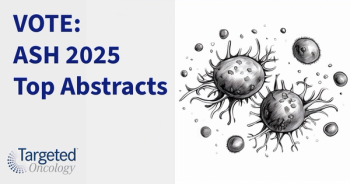
Real World Data Show Patients with DLBCL Receive Axi-Cel/Tisa-Cel Prior to Treatment Failure
Real world data looking at the use of the recently approved CAR T-cell therapies tisagenlecleucel and axicabtagene ciloleucel show that patients are receiving it prior to failing treatments and that 1 in 6 patients were experiencing relapse after treatment.
In the first few years of their availability in the United States, axicabtagene ciloleucel (axi-cel; Yescarta) and tisagenlecleucel (tisa-cel; Kymriah) have been used to mostly treat patients with diffuse large b-cell lymphoma (DLBCL) in the outpatient setting who are receiving the CAR T-cell therapies prior to failure on 2 prior lines of therapy, according to findings from a real world study presented at the virtual European Hematology Association Annual Meeting.1
Looking at a total of 93 patients with DLBCL, 58% (n = 54) received axi-cel and 42% (n = 39) received tisa-cel, the majority of which (59%) received either CAR T-Cell therapy in the outpatient setting, compared to 40% in inpatient care. In a median follow up of 6.3 months, 45% of patients received either 2 or more lines of systemic therapy prior to receiving tisa-cel or axi-cel, while 17% received their systemic therapy after the CAR T-cell therapy. Tisa-cel or axi-cel was initiated at a median of 12.9 months following the initial diagnosis of DLBCL.
Commercial insurance was the primary payer during the time of therapy on either tisa-cel or axi-cel for 83% of patients with DLBCL, followed by 12% on Medicare, 3.2% on Medicaid, and 1 patient was unknown. Following CAR T-cell therapy, 82.8% did not receive therapy, 10.8% had 1 therapy after CAR T-cell therapy, and 6.5% had 2 therapies following either tisa-cel or axi-cel. For patients given systemic therapy following CAR T-cell therapy, a majority received rituximab (Rituxan) followed by, ibrutinib (Calquence), lenalidomide (Revlimid), nivolumab (Opdivo), and pembrolizumab (Keytruda). Researchers found a median of 4.4 months between CAR T-cell therapy and the next line of therapy.
Patients with at least 1 claim for either axi-cel or tisa-cel and were diagnosed with DLBCL were identified from the US claims database Symphony Integrated Dataverse (IDV) that houses 280 million active unique patients which represent 73% of specialty prescriptions, 58% of medical claims, and 30% of hospital claims. Nine patients were excluded due to having insufficient data, but initially 114 patients were identified to have been treated with either axi-cel or tisa-cel treatment, 21 of which were diagnosed with acute lymphoblastic leukemia (ALL).
Axi-cel and tisa-cel have been on the US market following their approval for treatment in patients with large b-cell lymphoma in 2017 and 2018 respectively. Data was looked at between 2018 to 2020, with the majority of patients initiated on CAR T-cell therapy in 2020 (41%).
“Despite short follow-up, 1 in 6 patients appear to have relapsed disease based on need for additional systemic therapy,” the researchers concluded. “Further research is warranted to understand real-world clinical outcomes among patients treated with CAR T therapy outside the trial setting.”
Reference
Klink A, Savill K, Liassou D, et al. Real-World Treatment with CAR T-Cell Therapy of United States (US) Patients with Large B Cell Lymphoma (LBCL). Presented at: European Hematology Association 2021 Virtual Congress; June 9-19, 2021; virtual. Abstract EP737.









































